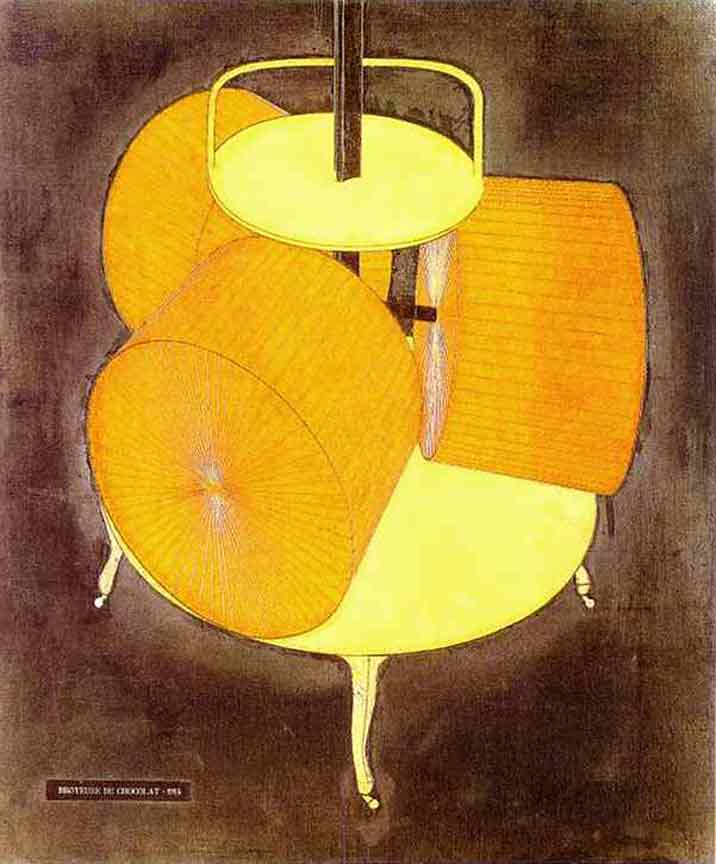On a day when it is traditional to consume large quantities of chocolate, this week’s painting depicts a principal part of the apparatus used in its preparation. Chocolate Grinder No 1, painted by Marcel Duchamp in January 1913, was based on the artist’s recollections of a particular chocolate shop in Rouen, where he went to school. Chocolate is still a speciality of the town, as it was in the time of Duchamp, whose way home from the Lycee Corneille took him past the doors of an establishment founded by the prince of Rouen chocolatiers: Maison Gamelin. In those days one side of the double-fronted shop in the cobbled Rue Beauvoisine, just north of the cathedral, was reserved for the chocolate-making process. Driven by a steam engine in the basement at the back of the shop, a mill would grind cocoa beans to a paste. Following the addition of sugar, the mixture was then turned into smooth and highly concentrated chocolate by three heavy, drum-like rollers set into the circular basin the machine. All this was visible through the shop window. Meanwhile, a burner set underneath the basin sent the aroma of pure hot chocolate wafting into the street outside.
Twenty years later, in reverent remembrance of things past, Duchamp set his painted chocolate grinder on the plinth of a low Louis XV table with three delicately carved legs. This was, perhaps, his way of mildly aggrandising his subject. An ordinary object has been turned into an odd little monument to thwarted yearnings. There are one or two other intriguing touches. Above the chocolate rollers, Duchamp has added an old-fashioned circular necktie, out of which sprouts the phallically suggestive protrusion of a bayonet. The background is a shadowy void. The image presents itself as a riddle wrapped inside an...

ITP 52: Chocolate Grinder, by Marcel Duchamp
15-04-2001

